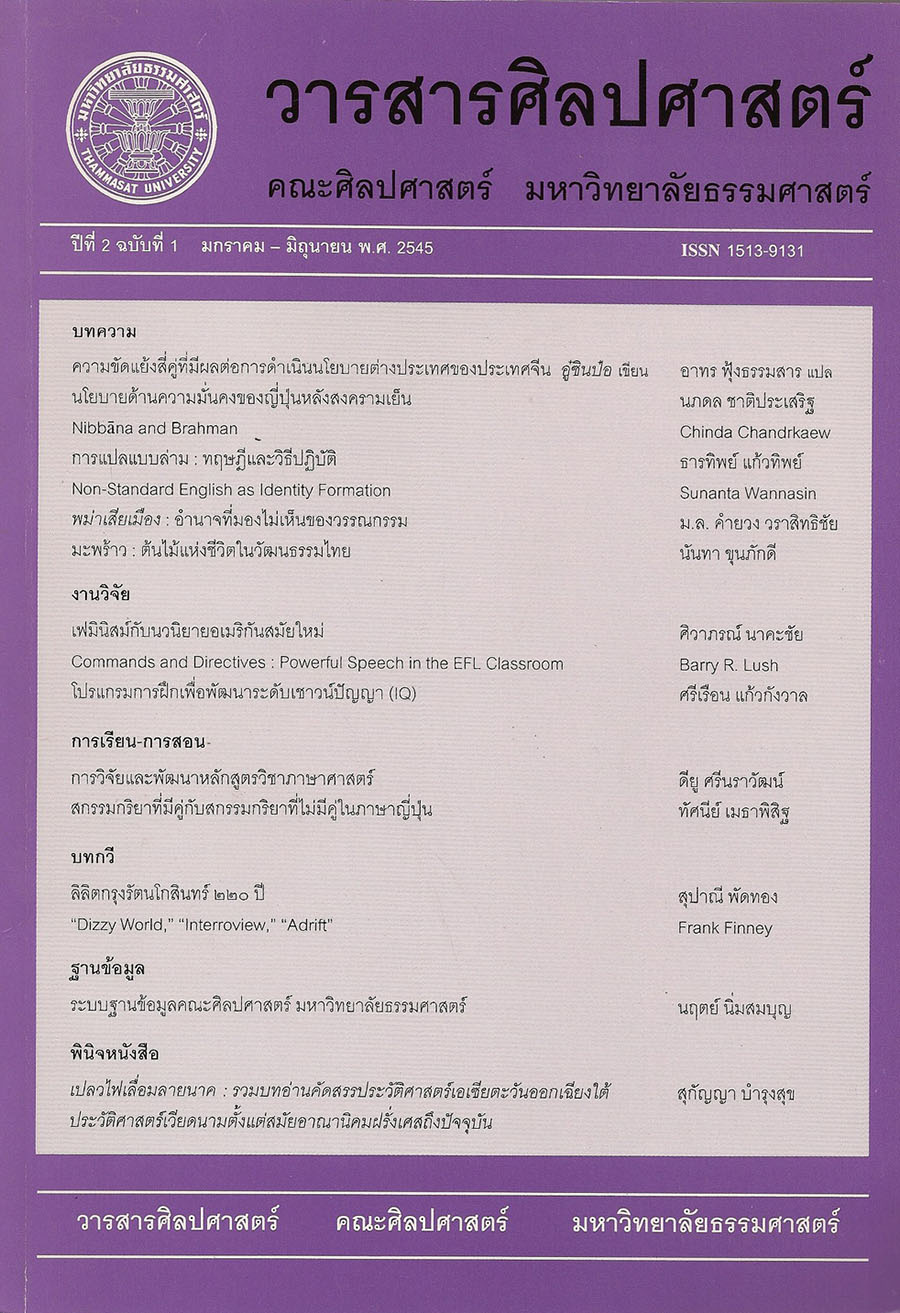Commands and Directives: Powerful Speech in the EFL Classroom
Main Article Content
บทคัดย่อ
This research looks at whether male and female teachers conform to documented gender interaction patterns in same-sex and mixed-sex EFL classroom. According to Coates (1993), Fishman (1983) and others, men and women interact differently in same-sex and mixed-sex groups and dyads with men using more direct commands and directives than women. This study found that, unlike many other gender studies, female teachers used more direct commands and directives than male teachers. However, it was also found that all the subjects used similar verbal interaction patterns regardless of their gender or class type and for the same reason: to establish and maintain their position of power and dominance in the class.
งานวิจัยฉบับนี้ศึกษาผู้สอนชายและผู้สอนหญิงเพื่อวิเคราะห์ว่ารูปแบบของการใช้วัจนภาษาระหว่างผู้สอนกับผู้เรียนในห้องเรียนภาษาอังกฤษเป็นภาษาต่างประเทศ โดยพิจารณาจากตัวแปรด้านเพศของผู้สอนและของผู้เรียน จากงานวิจัยของ Coates (1993) Fishman (1983) และนักวิจัยท่านอื่น ๆ พบว่าผู้ชายและผู้หญิงมีรูปแบบของการใช้วัจนภาษาแตกต่างกันเมื่ออยู่ในกลุ่มที่มีเพศเดียวกันหรือต่างเพศกันและเมื่อทำงานคู่กับเพศเดียวกันหรือต่างเพศกัน และพบว่าผู้ชายจะใช้คำสั่งและการกล่าวชี้แนะมากกว่าผู้หญิง ผลจากการวิจัยของผู้เขียนเองนั้นแตกต่างจากงานวิจัยชิ้นอื่นๆ ที่ศึกษารูปแบบการใช้วัจนภาษาโดยพิจารณาจากตัวแปรด้านเพศ กล่าวคืองานวิจัยฉบับนี้พบว่าผู้สอนหญิงใช้คำสั่งและคำกล่าวชี้แนะมากกว่าผู้สอนชาย อย่างไรก็ตามรูปแบบของการใช้วัจนภาษาของทั้งผู้สอนชายและผู้สอนหญิงมีความคล้ายคลึงกันไม่ว่าจะสอนวิชาใด ไม่ว่าผู้สอนจะเป็นเพศใดหรือไม่ว่าผู้เรียนจะเป็นเพศเดียวกันหรือต่างเพศกับผู้สอน ผู้สอนชายและผู้สอนหญิงเหล่านี้ต่างก็ใช้วัจนภาษากับผู้เรียนโดยมีจุดมุ่งหวังเดียวกันที่จะแสดงอำนาจเหนือผู้เรียน


